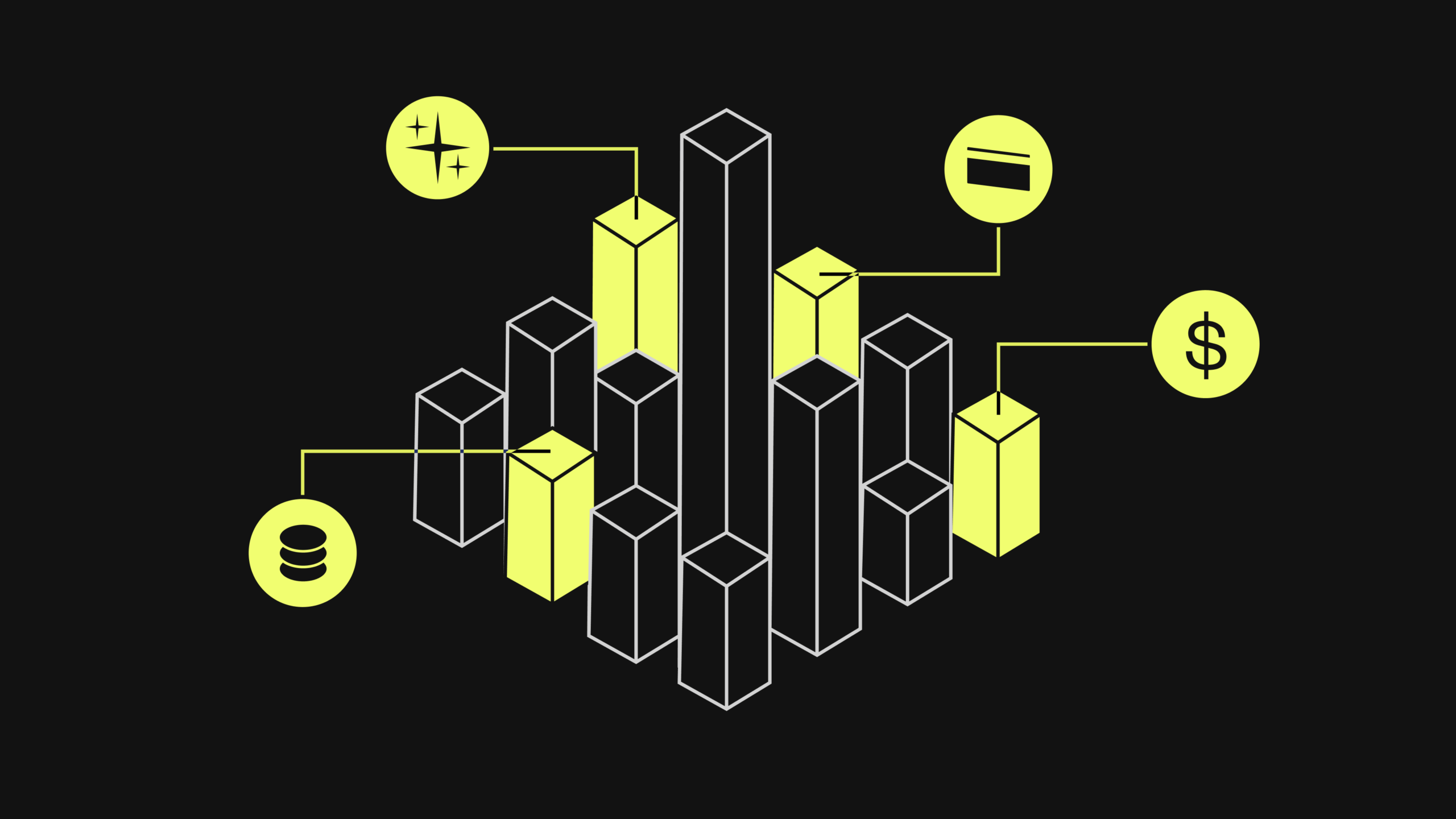
Key Takeaways
The most significant impact of AI in banking is not at the customer-facing edge but in the core operational processes. This article redefines the top 10 use cases of AI in the banking sector, moving beyond the commonly cited examples of chatbots and high-level fraud detection.
- What it does: Agentic AI can understand natural language, reason through complex workflows, and orchestrate processes across multiple systems. This allows for end-to-end automation of critical banking functions such as KYC, loan origination, trade finance, and fraud investigation.
- The business impact: These are not isolated solutions but building blocks for an intelligent, autonomous operational core that will drive efficiency, ensure compliance, and free up human employees for higher-value work.
Search for a list of the top uses of AI in banking, and you will find a predictable collection of ideas. For years, these lists have been dominated by customer-facing chatbots and high-level descriptions of fraud detection algorithms. While important, these applications barely scratch the surface of what’s possible. They overlook the massive, complex operational engine where the real work of a financial institution gets done—and where the most significant transformation is waiting to happen.
The true impact of artificial intelligence in banking is not found at the customer-facing edge; it’s realized in the core processes that form the central nervous system of the bank. This article redefines the Top 10 by focusing on the critical, process-oriented use cases that deliver true, enterprise-wide value.
We will explore how a new class of agentic automation is moving beyond simple tasks to power end-to-end workflows in the most challenging areas of banking. This is a new blueprint for leaders—one that shifts the focus from surface-level applications to building an intelligent, autonomous operational core. This is the definitive guide to the most impactful use of AI in banking today.
The Shift from Automating Tasks to Orchestrating Processes
The reason these deeper use cases are now possible is due to a fundamental shift in automation technology. First-generation tools like RPA were designed to automate simple, repetitive tasks—mimicking clicks and keystrokes. They were brittle and incapable of handling the complex, exception-driven nature of core banking operations.
The new paradigm is agentic automation, where an intelligent AI agent can understand instructions in natural language, reason through multi-step processes, and autonomously orchestrate workflows across multiple systems. This is the key that unlocks the true potential of banking and AI. It’s the difference between a bot that can copy-paste data and an AI agent that can manage an entire loan origination process.
The Top 10 Banking Automation Use Cases
Here are the top 10 use cases where agentic AI is making the most significant impact, transforming the operational fabric of modern financial institutions. Each banking automation use case represents a move from manual drudgery to intelligent automation.
1. End-to-End KYC and Customer Due Diligence (CDD)
- The Problem: KYC and CDD are manually intensive, slow, and prone to error, creating significant compliance risk and delaying customer onboarding.
- The Agentic AI Solution: An AI agent manages the entire workflow, from extracting data from unstructured application documents to verifying information against public registries, screening against sanctions lists, and compiling a complete, auditable report for the compliance officer. This is a premier use of AI in banking.
2. Intelligent Loan and Mortgage Origination
- The Problem: The loan origination process is notoriously slow, involving dozens of documents and manual checks, leading to a poor customer experience.
- The Agentic AI Solution: The agent automates the entire lifecycle. It ingests and validates all applicant documents (pay stubs, tax returns), runs credit checks, ensures compliance with underwriting rules, and prepares a complete loan file for the underwriter’s final judgment.
3. Automated Trade Finance Document Processing
- The Problem: Trade finance relies on a complex web of documents—letters of credit, bills of lading, invoices—that must be manually verified, creating significant delays.
- The Agentic AI Solution: An AI agent uses advanced document intelligence to read and validate the entire document package, checking for discrepancies and ensuring compliance with international trade regulations, drastically accelerating the financing cycle. This is a powerful banking automation use case.
4. Fraud Investigation and Response Orchestration
- The Problem: When a fraud alert is triggered, analysts spend most of their time manually gathering data from various systems before they can even begin their investigation.
- The Agentic AI Solution: The moment an alert is generated, an AI agent instantly gathers all relevant information—customer transaction history, account details, related entity data—and presents a complete case file to the fraud analyst, allowing them to focus immediately on high-value investigation. This is a critical use of AI in banking.
5. Dispute Resolution and Chargeback Processing
- The Problem: Managing card disputes and chargebacks is a high-volume, rules-intensive process that consumes enormous manual effort.
- The Agentic AI Solution: An agent handles the end-to-end process, from the initial customer claim to gathering evidence, applying the relevant network rules (Visa, Mastercard), and processing the final credit or debit.
6. Automated Financial Close and Reconciliation
- The Problem: The month-end close is a stressful, manual process of reconciling accounts across countless spreadsheets and sub-ledgers.
- The Agentic AI Solution: The agent automates complex reconciliations (including intercompany and bank reconciliations), pulls data from various sources, identifies discrepancies, and prepares journal entries for posting to the general ledger, ensuring a faster, more accurate close. This is a core use of AI in banking for the finance department.
7. Regulatory Reporting and Compliance Automation
- The Problem: Generating regulatory reports (like SARs or CCAR) is a complex, manual process of aggregating and formatting data from across the institution.
- The Agentic AI Solution: An AI agent automates the data aggregation, validation, and formatting required for regulatory submissions, creating a complete and auditable process that reduces compliance risk. This is a prime example of a modern banking automation use case.
8. Supplier and Third-Party Risk Management
- The Problem: Onboarding and continuously monitoring third-party vendors is a critical but often manual and periodic risk management function.
- The Agentic AI Solution: An agent automates the vendor onboarding process, from due diligence checks to contract validation, and can continuously monitor for any changes in a vendor’s risk profile, providing real-time risk intelligence. The future of AI in banking depends on managing these ecosystem risks.
9. End-to-End Customer Onboarding and Account Opening
- The Problem: Beyond just the compliance check, the entire account opening process is often fragmented across multiple departments and systems.
- The Agentic AI Solution: A single AI agent orchestrates the entire onboarding journey, from the initial application and KYC checks to setting up the account in the core banking system and sending the final welcome communication to the customer. This is a key application of artificial intelligence in retail banking.
10. IT and Access Governance Automation
- The Problem: Critical IT governance tasks like user access reviews are often manual, time-consuming, and prone to being overlooked, creating security risks.
- The Agentic AI Solution: An agent can automate the entire user access review process, pulling user lists from various applications, routing them to the correct managers for certification, tracking responses, and revoking access where necessary, ensuring a secure and compliant IT environment. This use of AI in banking is critical for internal governance.
Building an Autonomous Operational Core
These ten use cases share a common thread: they are not isolated point solutions. They are the building blocks of an intelligent, autonomous operational backbone for the entire institution. The true power of banking and AI is realized when these intelligent agents work together, sharing information and orchestrating processes across departmental silos.
The future of AI in the banking sector is not about having a collection of disparate tools, but about building a unified, intelligent core that drives efficiency, ensures compliance, and frees human talent to focus on what matters most. The era of AI in banking is finally moving beyond the hype and into the operational heart of the enterprise.
Discover the Power of Kognitos
Our clients achieved:
- 97%reduction in manual labor cost
- 10xfaster speed to value
- 99%reduction in human error
AI is used to automate complex, end-to-end business processes that were previously manual. This includes core operations like KYC and customer due diligence, loan origination, fraud investigation, financial reconciliation, and regulatory reporting, moving far beyond simple chatbots.
The best way to leverage artificial intelligence in banking is to focus on automating core operational processes with an agentic automation platform. This approach empowers business users to build and manage their own automations in natural language, transforming critical functions from manual cost centers into efficient, scalable, and compliant operations.
Key examples include an AI agent autonomously processing a mortgage application from start to finish, managing the entire KYC/AML verification process for a new customer, and automating complex financial reconciliations during the month-end close.
The future is the creation of an autonomous operational core, where intelligent AI agents manage the majority of the bank’s back-office and middle-office processes. This will allow financial institutions to operate with unprecedented speed, accuracy, and agility.
The primary benefits include a dramatic reduction in operational costs, the elimination of human error in data-intensive processes, faster customer onboarding and service delivery, a more robust and auditable compliance posture, and the empowerment of employees to focus on strategic, high-value work. This is the value of artificial intelligence in retail banking and beyond.








